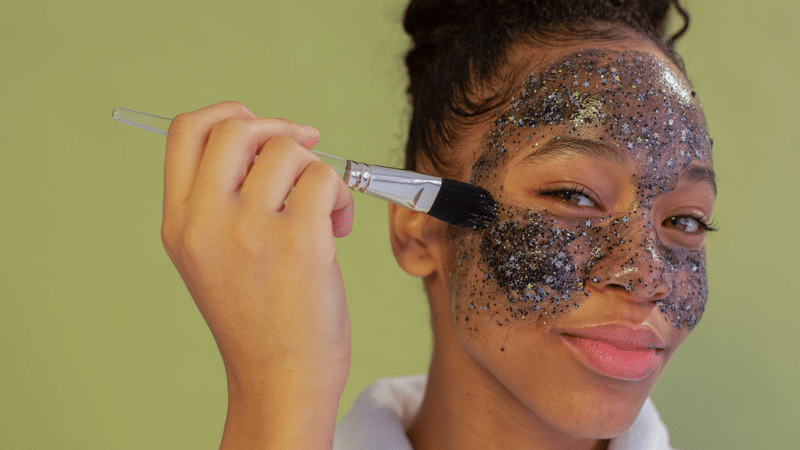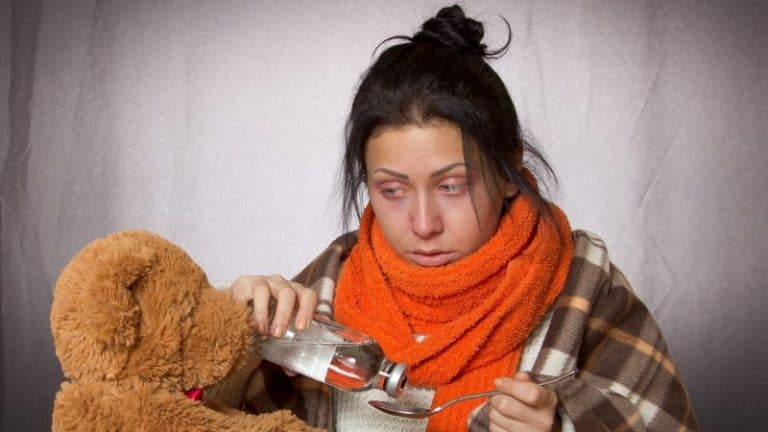How to Get Rid of Whiteheads in 2024 (Complete Guide)

Whiteheads are a form of mild acne with pus at the tip. They form when sebum, dead skin cells, and bacteria get trapped in a hair follicle.
This guide offers several recommendations on how to get rid of whiteheads. You have the option of OTC medications, proper hygiene, and avoidance of certain triggers. These methods are proven to work, but the approach that works for you may not suit everyone due to various skin types.
Identifying Whiteheads
Whiteheads occur in different body parts, such as the face, back, chest, upper arms, and neck. They’re more likely to occur in places with a higher concentration of sebaceous glands. Most of the recommendations on how to prevent whiteheads focus on avoiding their triggers. Several features distinguish whiteheads from other forms of acne, and you can identify them by these characteristics. Here are some of them:
White Tip
This isn’t a feature unique to whiteheads, but it’s one of the ways to identify them. Whiteheads have a tip that’s full of white pus. Other acne types may have a similar head, but an inflamed area usually surrounds the pimple. On the other hand, whiteheads are just white tips without any inflammation in the surrounding area.
No Inflammation
If you see uninflamed pus-filled acne, it’s a whitehead. Such acne doesn’t cause the irritation, pain, itching, etc., that’s typical of inflamed acne. The lack of inflammation prevents whiteheads from spreading to healthier skin tissues and makes them easier to treat. This means that, when trying to figure out what to do with whiteheads, we can’t rely on treatments that work on inflamed acne, like potent zinc supplements or the like.
Closed Head
This is one of only two factors that differentiate whiteheads from blackheads. The closed head prevents oxygen from reaching the sebum trapped in a follicle. The sebum is unoxidized and serves as food for some bacteria. The closure of the head explains why pus gets trapped and forms a whitehead. It can be tempting to pop the closed head, but that’s not really a recommendation you’ll often hear when inquiring about how to get rid of whiteheads on your chin, forehead, or other body parts.
Small Size
Whiteheads owe their small size to the fact they are not inflamed. They do contain bacteria that can inflame the skin, but for some reason, our bodies manage to resist this, and the bacteria don’t expand further.
Causes of Whiteheads
All types of acne have similar causes, including whiteheads. These can be external or internal. Internal causes require expert medical help to eliminate, while you can typically control external causes on your own.
Sex Hormones
Of all the causes of acne, we’ve identified sex hormones as the most important. Androgen hormones must maintain a good balance for the normal production of sebum. However, several conditions can cause an imbalance in this equilibrium, inducing higher testosterone levels. This triggers more sebum secretion than the skin needs and causes the pores to get clogged.
Many people would like to know how to get rid of whiteheads overnight, but that’s not easy to achieve without diligence and the right procedure for your condition. However, in case your acne is triggered by overproduction of sebum, you might want to consider supplementing with high-quality fish oil, as the omega-3 fatty acids can help manage oil production.
Underlying Health Conditions
Whiteheads are more common in women and men who inherit a genetic condition that weakens the body’s immune system. While women can inherit this genetic disorder, there are a few other causative agents in this gender. Adult acne is more likely in women than men due to a few reproductive health conditions that can trigger it. There are three such conditions generally called polycystic ovary syndrome (PCOS). They include:
- irregular periods
- excess androgen
- polycystic ovaries
Sexual Activity
Sexual activity influences testosterone levels, but research on the subject is ongoing, and there’s no definite conclusion as to whether having sex increases or reduces testosterone levels. Likewise, while the relationship between testosterone and acne is undeniable, it is difficult to quantify. For instance, even though there have been links found between acne and using effective testosterone boosters, a reduction in testosterone can also lead to a similar outcome.
One study in rats shows that the levels increase after sex, only to fluctuate after subsequent sexual interactions, while another study observing humans suggests that sexual intercourse boosts testosterone levels. Still, sexual activity (or abstaining from it) isn’t being suggested as a solution to people interested in how to remove whiteheads naturally because no concrete evidence supports this.
Improper Workout Hygiene
Sweat tends to dry on your body when you don’t bathe immediately after sweating. Our body’s temperature is higher during exercise, increasing the size of hair follicles. This makes it likelier for dead skin cells to enter the skin, especially when the sweat is allowed to dry.
Washing up removes the dirt, sebum, and even bacteria that might have gathered around the opening of our follicles, especially when you use soaps that contain ingredients like glycolic acid. It’s recommended to bathe with warm water and then rinse your body with cold water, which helps to shrink the pores. Proper hygiene, coupled with whitehead removal products, is usually the most effective way to deal with acne.
Contact With Dirty Clothes
Dead skin cells and even bacteria collect on clothes after we wear them. These substances can get back to the skin if we don’t wash them off. The more dirt and bacteria on your skin, the greater your chances of getting clogged pores. This is especially important for undies and pillowcases. Clothes that we’ve been sweating in but still look clean are also bad for acne.
Friction Against the Skin
When we sit in a chair for too long, the pressure and friction against our skin can trigger acne by rubbing dead skin cells and bacteria into the pores. Tight-fitting clothes, backpacks, and straps also contribute to acne by trapping unwanted particles on the skin.
Medication
Look into any medications you are taking right now. If they contain ingredients that trigger acne, they could cause a breakout, especially if you started noticing whiteheads after you started using the medicine. These ingredients include but aren’t limited to:
- corticosteroids
- lithium
- anticonvulsants
- barbiturates
- androgenic steroids
- DHEA
- bromides
- iodides
Stress
If you’ve been reading up on how to get rid of whiteheads on the nose naturally, you probably already know that stress is a significant contributor to all kinds of acne, including whiteheads. But did you know it’s only an indirect cause? Stress can make you eat more food, including those high in sugar. This increases your chances of breaking out. Another effect of stress on whiteheads is that it slows down the healing process and worsens breakouts.
High Glycemic Index (GI) Foods
It’s been proven that foods that are high in sugar increase the likelihood of a breakout. Like stress, these foods are an indirect cause of acne. Namely, they increase insulin levels in the body, which leads to an increase in androgen hormones. This may create a hormonal imbalance, potentially causing acne.
How to Get Rid of Whiteheads
There are many ways to treat whiteheads, most of which are DIY. Depending on what’s causing your breakout, you may not need to buy OTC medication. You can make certain changes in your lifestyle, work, diet, and hygiene to eliminate breakouts. Let’s start by examining the most effective treatments—OTC medications. If you seek recommendations on how to get rid of whiteheads on the nose, the best way to do this is via OTC medications or expert acne removal services.
Salicylic Acid Products
Salicylic acid, which is commonly found in many skincare products, can be amazingly effective against acne. It belongs to the family of beta hydroxy acids and is derived from willow bark. The structure of salicylic acid makes it oil soluble, allowing it to reach the hair follicles. You see, there’s a lipid layer between skin cells that only oil-soluble substances like salicylic acid can penetrate. That’s why it’s very effective in unclogging pores.
Different OTC medications contain anywhere from just above 0% to 5% of salicylic acid. Although it’s more effective against blackheads, salicylic acid can also help with whiteheads. As whiteheads contain living bacteria, the anti-bacterial properties of salicylic acid make it one of the best OTC choices for whiteheads.
Glycolic Acid
Unlike salicylic acid, glycolic acid is water-soluble and derived from sugar cane. Products that are usually recommended when discussing how to remove whiteheads typically contain these acids. Salicylic acid doesn’t remove dead cells on the skin surface adequately. That’s because it’s not water-soluble and can’t easily break the bond between dead cells and the skin.
On the other hand, this is where glycolic acid shines. However, it may not be very effective when used on oily skin. People with oily skin need a salicylic acid product or, even better, a mix of the two.
Exfoliate
Exfoliation is the process of removing dead skin cells from the surface of the skin. It’s done manually or with chemicals like retinoids, glycolic acid, and salicylic acid, among many other substances. Manual exfoliation products usually contain tiny grains meant to scrub dead cells off your skin. This can be done with a brush, sponge, or even your hands. The scrubbing action also stimulates blood circulation, which improves skin texture. However, overdoing it can easily leave the skin irritated, potentially even leading to more serious types of acne.
In general, chemical exfoliants are more effective because they have a deeper reach and are less likely to cause abrasion. In essence, if you seek an effective recommendation on how to remove whiteheads permanently, exfoliation is the way to go.
Avoid Triggers
In addition to the causes mentioned earlier, which you should avoid or at least minimize, there are several more to consider, including:
- air pollution
- too much exposure to sunlight
- a sugary diet
- sleeping in your wet swimsuit
- using comedogenic skincare or hair products
Seek Medical Help
If your whiteheads don’t seem to resolve after four months of treatment, consider seeing a doctor because you might be dealing with a more serious issue involving an underlying health condition.
Conclusion
We’ve discussed several top ways to eliminate whiteheads. It’s important to know that each method requires patience and persistence, provided you experience no serious side effects. You can’t get rid of whiteheads permanently if you continue to do things that trigger acne. Rather, you must figure out what’s causing you to break out and tackle the issue head-on.
FAQs
What is the quickest way to get rid of a whitehead?
The quickest way to eliminate whiteheads is to figure out what’s causing you to break out and find a way to fix the issue. It could be your workout habits, diet, clothing, work environment, etc. In general, you need to avoid or minimize potential causes while applying OTC medications diligently.
Is it okay to pop a whitehead?
It’s not at all recommended, but if you absolutely have to, you can pop non-inflamed acne like whiteheads, provided you take the necessary precautions. However, it’s safer to use the procedures suggested here because there’s always the risk of scarring and inflammation.
Why do I get so many whiteheads?
It could be your hormones, genetic makeup, diet, etc. You can figure this out by avoiding all the known triggers. If nothing changes after some months, you need to see a doctor.
Do whiteheads go away naturally?
Although somewhat persistent, most whiteheads can go away naturally, usually within seven days from onset. If they’re still there after a week, you should try to pinpoint the trigger and eliminate it or contact a health care provider.
What causes whiteheads?
There are over a dozen causes of whiteheads. The major ones include:
- hormone imbalance
- certain genes
- poor hygiene
- stress
- air pollution
- tight clothing
- comedogenic skincare products
- laundry detergents
- not exfoliating
People interested in how to get rid of whiteheads often find that the most effective solutions typically involve identifying these causes and eliminating them.






